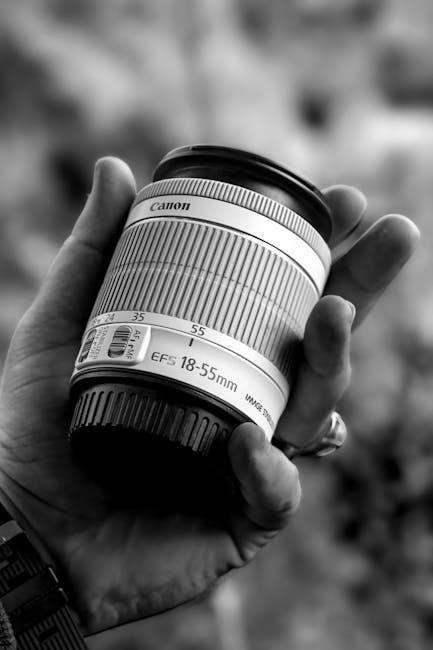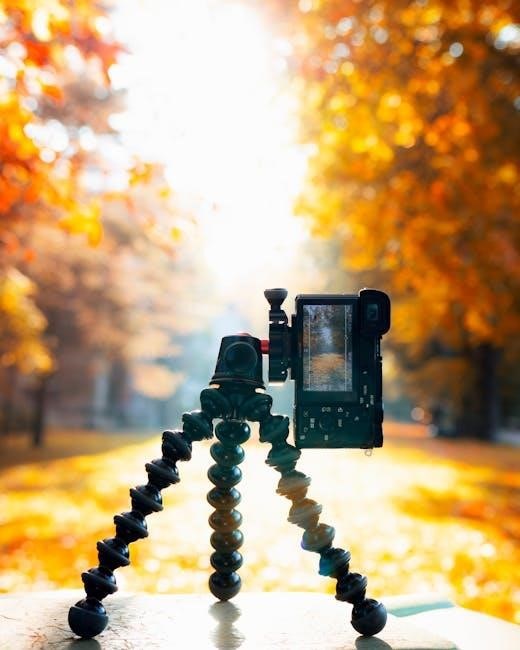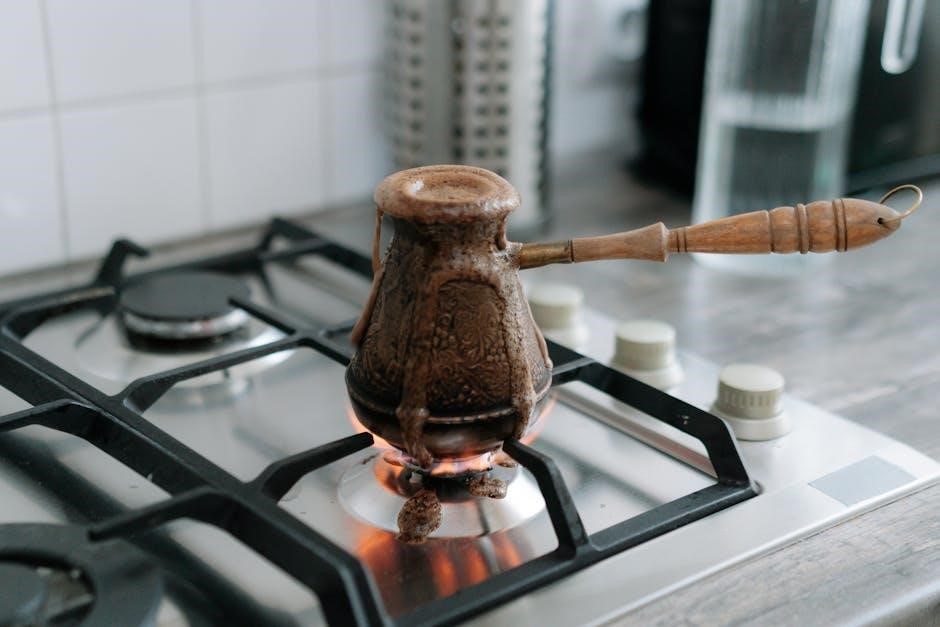Welcome to the SleepImage Ring instructions guide. This comprehensive resource helps you understand and effectively use the SleepImage Ring for accurate sleep monitoring and improved sleep health.
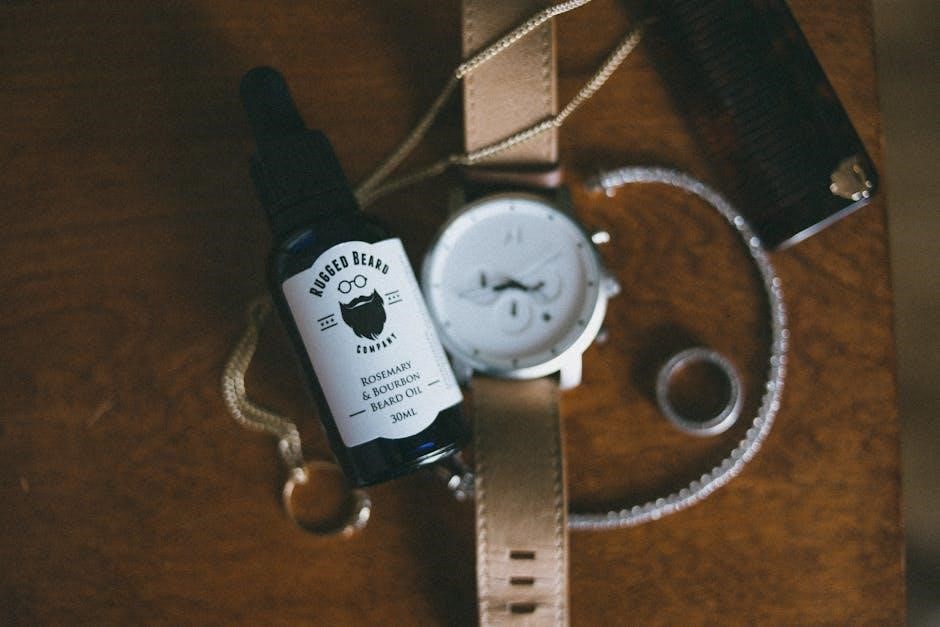
Overview of the SleepImage Ring
The SleepImage Ring is a cutting-edge‚ FDA-cleared wearable device designed for home sleep testing and monitoring. It tracks vital sleep metrics‚ including sleep stages‚ respiratory rate‚ and oxygen levels‚ providing detailed insights into sleep quality. Lightweight and comfortable‚ the ring is worn on the finger during sleep‚ offering a non-invasive alternative to traditional polysomnography. Its advanced sensors ensure accurate data collection‚ while the companion app simplifies results analysis. Ideal for detecting sleep disorders like apnea‚ the SleepImage Ring combines convenience with medical-grade accuracy‚ empowering users to take control of their sleep health effortlessly.
Importance of Proper Usage for Accurate Sleep Monitoring
Proper usage of the SleepImage Ring is essential for obtaining accurate sleep data. Ensuring the ring is fully charged‚ worn correctly‚ and paired with the app guarantees reliable monitoring. Incorrect placement or insufficient charging may lead to incomplete or inaccurate results. Consistent use and adherence to the provided instructions maximize the device’s ability to track sleep stages‚ respiratory rate‚ and oxygen levels effectively. Proper usage ensures comprehensive insights into sleep quality‚ aiding in the early detection and management of sleep disorders like apnea. Following guidelines is crucial for optimal performance and accurate health monitoring.
Charging the SleepImage Ring
Charge the SleepImage Ring during the day. If not fully charged‚ it may not collect complete sleep data. Ensure proper charging for accurate monitoring.
Step-by-Step Charging Instructions
Locate the charging port on the SleepImage Ring.
Connect the provided charger to the port.
Plug the charger into a power source.
Charge the ring during the day to ensure it’s ready for nighttime use.
Avoid overnight charging to prevent overcharging.
Ensure the ring is fully charged before use for accurate sleep monitoring.
Do not test without a full charge‚ as incomplete charging may result in incomplete data collection.
Recommended Charging Duration for Optimal Performance
Charge the SleepImage Ring for at least 2-3 hours to ensure a full battery. Leaving it plugged in during the day guarantees it’s ready for nighttime use. Avoid overnight charging to prevent overcharging‚ which may reduce battery lifespan. A full charge ensures uninterrupted sleep monitoring and accurate data collection. Make sure the ring is fully charged before use to avoid incomplete sleep tracking. Proper charging habits help maintain optimal performance and reliability of the device for consistent sleep health monitoring.

Setting Up the SleepImage Mobile App
Download and install the SleepImage app‚ sign in with your credentials‚ and pair the ring with your device. Ensure compatibility and follow in-app instructions for setup.
Downloading and Installing the App
To begin‚ visit the App Store (for iOS) or Google Play Store (for Android) and search for the SleepImage mobile app. Ensure you download the official version to avoid security risks. Once downloaded‚ follow the installation prompts to complete the setup. Open the app and agree to the terms of service. Note that the app requires a stable internet connection for proper functionality. After installation‚ you’ll be ready to create an account and pair the SleepImage Ring. Always verify app compatibility with your smartphone to ensure smooth operation.
Creating an Account and Signing In
Open the SleepImage app and select “Create Account” to start. Enter your personal details‚ such as name‚ email‚ and password‚ to register. If provided‚ use the access code from your healthcare provider. Once registered‚ sign in using your credentials. Ensure your email is verified for account activation. The app will guide you through this process seamlessly. A secure and accurate account setup is essential for syncing data from your SleepImage Ring and accessing sleep insights. This step ensures personalized tracking and monitoring of your sleep health.
Navigating the App Interface
The SleepImage app features a user-friendly interface designed for easy navigation. Upon opening‚ you’ll see a dashboard displaying sleep data‚ recent recordings‚ and quick-access buttons. Use the navigation menu at the bottom to switch between sections like Home‚ Recordings‚ Settings‚ and Help. The Home tab provides an overview of your sleep metrics‚ while Recordings allows you to view and manage sleep sessions. Adjust settings like notification preferences or device pairing in the Settings section. The Help tab offers troubleshooting tips and FAQs for a smooth experience.
Pairing the SleepImage Ring with the App
To pair the SleepImage Ring‚ open the app‚ go to settings‚ and select “Connect New Recorder.” Follow on-screen instructions to complete the pairing process successfully.
Connecting the Ring to Your Smartphone
To connect the SleepImage Ring to your smartphone‚ ensure Bluetooth is enabled on your device. Open the SleepImage app‚ navigate to settings‚ and select “Connect New Recorder.” Follow the in-app prompts to pair the ring. Ensure the ring is fully charged and in close proximity to your smartphone. Once paired‚ a confirmation message will appear. If pairing fails‚ restart both devices and retry. Keep your smartphone within 6 feet of the ring during sleep for uninterrupted data collection. Proper pairing ensures accurate sleep monitoring and seamless data syncing.
Troubleshooting Pairing Issues
If the SleepImage Ring fails to connect‚ restart your smartphone and the ring. Ensure Bluetooth is enabled and no other devices are interfering. Check if the ring is fully charged and within range. Verify that the app is updated to the latest version. If issues persist‚ reset the ring by holding the power button for 10 seconds. Clear the app cache or reinstall the app if necessary. For unresolved problems‚ refer to the troubleshooting section in the app or contact customer support for assistance. Resolving pairing issues ensures accurate data collection and seamless monitoring. Always keep the ring updated for optimal performance.
Preparing for Sleep Monitoring
Charge the SleepImage Ring during the day to ensure full-night data collection. Wear it comfortably and place it correctly for accurate readings. Keep your smartphone nearby.
Wearing the Ring Comfortably
To ensure accurate sleep monitoring‚ wear the SleepImage Ring on your index or middle finger. The ring should fit snugly but not too tight‚ allowing proper blood flow. Position the sensor on the palm side of your finger for optimal data collection. Avoid overtightening‚ as this may cause discomfort. Adjust the ring before sleep to ensure it remains secure throughout the night. Proper placement and comfort are crucial for reliable readings and a restful sleep experience.
Ensuring Proper Placement for Accurate Data Collection
For precise sleep monitoring‚ place the SleepImage Ring on your finger with the sensor facing downward. Ensure the sensor touches your skin on the palm side for accurate readings. Avoid covering the sensor with bedding or clothing. Keep your hand still during sleep to minimize movement interference; The ring should not be too tight or too loose‚ as this may affect data accuracy. Proper placement ensures reliable collection of sleep stages‚ heart rate‚ and respiratory data‚ providing a comprehensive sleep analysis.

Starting the Sleep Test
Charge the SleepImage Ring‚ open the app‚ and tap “Start Test.” Wear the ring comfortably‚ ensure your phone is nearby‚ and begin recording your sleep data.
Initiating the Recording Process
Ensure the SleepImage Ring is fully charged and paired with your smartphone. Open the app‚ navigate to the sleep test section‚ and tap “Start Test.” Wear the ring comfortably on your finger‚ ensuring it fits snugly for accurate readings. Keep your phone within 6 feet of the ring during sleep. The device will automatically begin recording once you fall asleep‚ tracking sleep stages‚ breathing patterns‚ and other vital metrics. Follow the app instructions carefully to ensure uninterrupted data collection throughout the night.
Adjusting Settings for Individual Comfort
Open the SleepImage app and navigate to the settings menu to customize your experience. Adjust sensitivity levels to ensure accurate readings based on your sleep patterns. Enable or disable notifications to avoid disturbances during sleep. You can also set the ring to vibrate gently during REM sleep to help improve sleep quality. Experiment with different settings to find the optimal comfort level for uninterrupted monitoring. Proper adjustments ensure the ring fits snugly and tracks data accurately without causing discomfort during the night.

Monitoring Sleep Data
The SleepImage Ring tracks sleep stages like REM and deep sleep‚ providing real-time insights. Use the app to monitor metrics such as sleep duration and quality.
Understanding Sleep Stages Tracked by the Ring
The SleepImage Ring monitors various sleep stages‚ including REM and deep sleep‚ to provide a detailed analysis of your sleep patterns. It tracks light sleep‚ deep sleep‚ and REM sleep‚ offering insights into sleep cycles. The ring also measures sleep duration‚ quality‚ and disruptions‚ helping identify potential sleep disorders. By analyzing these stages‚ the ring generates a sleep score‚ giving you a clear overview of your rest quality. This data‚ accessible via the app‚ empowers you to make informed decisions for improving sleep health and addressing issues like sleep apnea.
Viewing Real-Time Data During Sleep
The SleepImage Ring allows you to monitor sleep data in real-time through the app. While sleeping‚ the ring continuously tracks heart rate‚ respiratory rate‚ and movement. This real-time data is synced to your smartphone‚ providing immediate insights into your sleep patterns. You can view metrics like sleep stages‚ oxygen levels‚ and body position directly on the app. This feature helps identify disruptions or irregularities as they occur‚ enabling timely adjustments for better sleep quality. Ensure your phone is nearby and connected to the ring for uninterrupted data monitoring throughout the night.

Stopping the Sleep Test
To stop the sleep test‚ open the SleepImage app and select “Stop Recording.” Ensure the ring is properly synced to save your sleep data accurately.
Properly Ending the Recording Session
To properly end the recording session‚ open the SleepImage app and select “Stop Recording.” Ensure the ring is within range of your smartphone to sync data. Once stopped‚ the device will cease collecting sleep data. It’s important to confirm that all data has synced successfully to avoid losing any information. After stopping‚ you can review your sleep data or charge the ring for future use. Always follow the app prompts to ensure a smooth termination of the session.
Syncing Data to the App
After stopping the recording‚ ensure the SleepImage Ring is in close proximity to your smartphone. Open the SleepImage app and navigate to the sync section. The app will automatically detect the ring and begin transferring data. Ensure Bluetooth is enabled on your device and the ring is properly paired. Once syncing is complete‚ your sleep data will appear in the app’s dashboard for review. If syncing fails‚ restart the app or reconnect the ring through the app settings to ensure all data is accurately transferred and saved. This step is crucial for maintaining your sleep records.
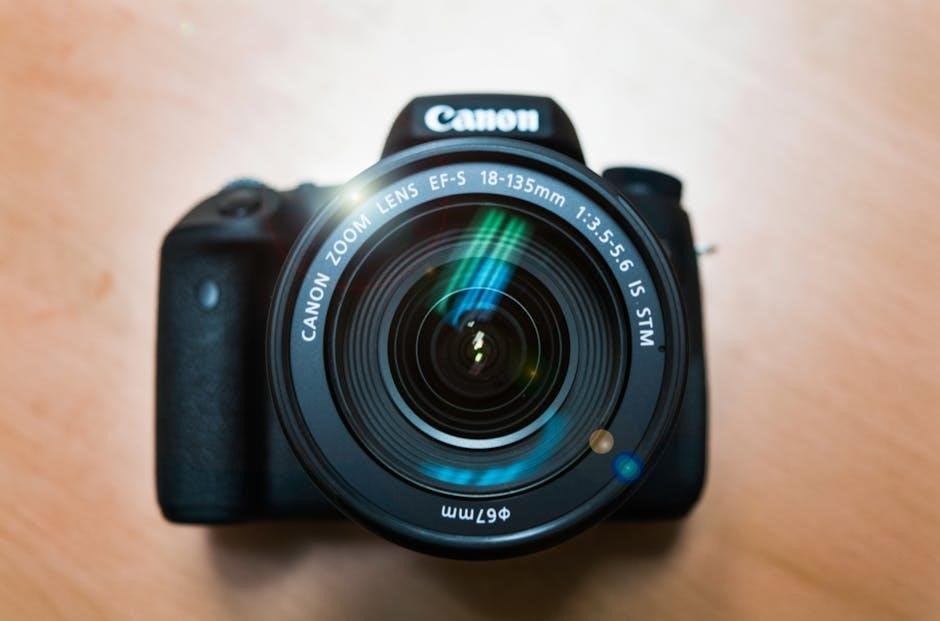
Interpreting Sleep Data
The SleepImage Ring provides detailed sleep insights‚ including sleep stages‚ duration‚ and quality metrics. Use the app to review your data‚ track progress‚ and improve sleep health effectively.
Understanding Sleep Quality Metrics
The SleepImage Ring tracks various sleep quality metrics‚ including total sleep time‚ sleep efficiency‚ and stages of sleep. The app provides a sleep score‚ offering insights into your rest quality. Metrics like disruptions‚ oxygen levels‚ and breathing patterns help identify potential issues such as sleep apnea or restless legs syndrome. By analyzing these metrics‚ you can better understand your sleep health and make informed adjustments to improve your sleep hygiene and overall well-being. Regular monitoring allows for long-term trends and progress tracking.
Identifying Patterns in Sleep Disorders
The SleepImage Ring helps detect patterns linked to sleep disorders like apnea‚ insomnia‚ or restless legs syndrome. By analyzing data such as breathing irregularities‚ oxygen levels‚ and movement during sleep‚ the app identifies consistent issues. Over time‚ it highlights recurring disruptions‚ enabling early detection of potential sleep disorders. This insights-driven approach allows users to address problems proactively‚ improving sleep quality and overall health.

Troubleshooting Common Issues
Identify and resolve connectivity or data accuracy issues with the SleepImage Ring. Follow app troubleshooting guides to address common problems and ensure seamless sleep monitoring performance.
Resolving Connectivity Problems
Experiencing connectivity issues with your SleepImage Ring? Ensure the ring is properly paired to the app and avoid pairing through phone settings. Restart the device‚ check Bluetooth connectivity‚ and confirm the app is updated. If issues persist‚ reset the ring by removing and re-pairing it. Keep the smartphone within range and close unnecessary apps to maintain a stable connection. For persistent problems‚ refer to the app’s troubleshooting guide or contact support for assistance.
Addressing Inaccurate Data Readings
If your SleepImage Ring provides inaccurate data‚ ensure proper placement on your finger and avoid tightening it excessively. Restart the device and sync it with the app to refresh the connection. Clean the sensors regularly to remove dirt or oils that may interfere with readings. If issues persist‚ check for software updates or reset the ring by removing and re-pairing it through the app. Ensure consistent internet connection for accurate syncing and reliable data collection during sleep monitoring.
Maintaining the SleepImage Ring
Regularly clean the SleepImage Ring with a soft cloth to ensure sensor accuracy. Update the software periodically for optimal performance and enhanced sleep tracking features.
Cleaning the Device for Hygiene
Regularly clean the SleepImage Ring using a soft‚ dry cloth to remove dirt or oils. For deeper cleaning‚ lightly dampen the cloth with water‚ avoiding harsh chemicals or submerging the device. Gently wipe the sensors and band‚ ensuring no moisture enters the ring. Allow it to air dry completely before use. Cleaning maintains sensor accuracy and hygiene‚ ensuring reliable sleep data collection. Avoid using alcohol or abrasive materials‚ as they may damage the device. Regular maintenance ensures optimal performance and longevity of your SleepImage Ring.

Updating Software for Enhanced Performance
Regular software updates are essential for optimizing the SleepImage Ring’s performance. To update‚ open the SleepImage app‚ navigate to the settings menu‚ and select “Check for Updates;” If an update is available‚ download and install it while the ring is connected to your smartphone. Ensure your phone has internet access and the ring is fully charged. Updates may improve accuracy‚ add features‚ or fix issues. Follow on-screen instructions carefully to complete the update. Keeping the software current ensures the best sleep monitoring experience and maintains device functionality.

Benefits of Using the SleepImage Ring
The SleepImage Ring offers convenient home sleep testing‚ non-invasive monitoring‚ and cost-effective solutions. It tracks sleep stages‚ respiratory rate‚ and provides accurate data for better sleep health management.
Convenience of Home Sleep Testing
The SleepImage Ring allows for easy and comfortable sleep monitoring from the comfort of your home. Unlike traditional polysomnography‚ it eliminates the need for lab visits‚ making it ideal for those who prefer privacy and familiarity. The ring is lightweight and non-invasive‚ ensuring uninterrupted sleep while collecting accurate data. Simply wear the ring‚ pair it with the app‚ and start recording. This hassle-free solution provides real-time insights into sleep patterns‚ enabling users to address sleep disorders without the inconvenience of clinical settings.
Non-Invasive Monitoring for Improved Comfort
The SleepImage Ring offers a non-invasive way to monitor sleep‚ ensuring maximum comfort during wear. Its lightweight design and lack of cumbersome straps or wires allow for natural movement while sleeping. The ring is gentle on the skin‚ reducing irritation and discomfort often associated with traditional sleep monitoring devices. This design promotes uninterrupted sleep‚ providing accurate data without sacrificing user comfort. The FDA-cleared technology ensures reliable results while maintaining a seamless and pleasant user experience.
Comparing with Traditional Sleep Studies
The SleepImage Ring offers a convenient alternative to traditional polysomnography‚ providing home-based sleep monitoring with comparable accuracy at a lower cost and greater accessibility.
Advantages Over Polysomnography
The SleepImage Ring offers a non-invasive‚ home-based alternative to polysomnography‚ providing greater convenience and comfort. It eliminates the need for lab visits‚ reducing costs and improving accessibility. The ring’s portability allows users to sleep naturally in their own environment‚ potentially yielding more accurate results. With real-time data tracking and a user-friendly app‚ it streamlines sleep monitoring while maintaining high accuracy. This makes it an ideal choice for those seeking a cost-effective‚ hassle-free solution for sleep disorder diagnosis and ongoing sleep health management.
Cost-Effectiveness and Accessibility
The SleepImage Ring is a cost-effective solution for sleep monitoring‚ reducing the need for expensive lab-based polysomnography. Its accessibility makes it ideal for home use‚ allowing users to monitor sleep comfortably and affordably. Priced at $299‚ it offers long-term savings compared to repeated lab visits. The ring’s portability and ease of use ensure that sleep health is accessible to a wider population‚ regardless of location or financial constraints. This affordability‚ combined with advanced technology‚ makes it a practical choice for individuals seeking accurate sleep data without the high costs of traditional methods.
FAQs About the SleepImage Ring
Discover answers to common questions about the SleepImage Ring‚ including its functionality‚ compatibility‚ and troubleshooting‚ to ensure optimal use for accurate sleep monitoring and diagnosis.
Common Questions and Answers
How do I pair the SleepImage Ring with my smartphone? Open the app‚ go to settings‚ and select “Connect New Recorder.” Why isn’t my ring charging? Ensure the charger is properly connected and the ring is placed correctly. Can I wear the ring during the day? Yes‚ but it’s optimized for sleep monitoring. How long does it take to charge? Typically 2-3 hours for a full charge. Is the ring compatible with all smartphones? It works with Apple and Android devices via the SleepImage app. Why is my sleep data incomplete? Ensure the ring is fully charged and within range of your phone during sleep.
Addressing User Concerns
Common concerns include connectivity issues‚ data accuracy‚ and comfort. Ensure the ring is fully charged and paired correctly for reliable performance. For accurate readings‚ clean the device regularly and wear it snugly. If the ring feels uncomfortable‚ adjust the size or consult the fitting guide. Connectivity problems can often be resolved by restarting the app or ensuring your smartphone is within range. For persistent issues‚ refer to the troubleshooting section or contact support for assistance.
Thank you for following the SleepImage Ring instructions. Proper use enhances sleep monitoring accuracy‚ ensuring better sleep health outcomes. Continuous use supports long-term sleep improvement and well-being.
Summarizing Key Instructions for Effective Use
To ensure accurate sleep monitoring‚ charge the SleepImage Ring fully before use and keep your smartphone nearby. Pair the ring with the app following the provided steps and wear it comfortably on your finger. Open the app before sleep to initiate recording and avoid interrupting the session. Upon waking‚ stop the test and sync the data. Regular software updates and proper hygiene practices will maintain device performance. By following these steps‚ you can optimize the SleepImage Ring for reliable sleep health insights and improved outcomes.
Encouraging Continuous Use for Better Sleep Health
Consistent use of the SleepImage Ring is crucial for understanding your sleep patterns and improving overall sleep health. By wearing the ring regularly‚ you can track your sleep stages‚ duration‚ and quality over time‚ gaining valuable insights into your rest. The device’s comfort and ease of use make it simple to incorporate into your nightly routine. Regular monitoring helps identify trends and areas for improvement‚ enabling you to make informed decisions for better sleep. Prioritize your sleep health by making the SleepImage Ring a consistent part of your daily routine.


